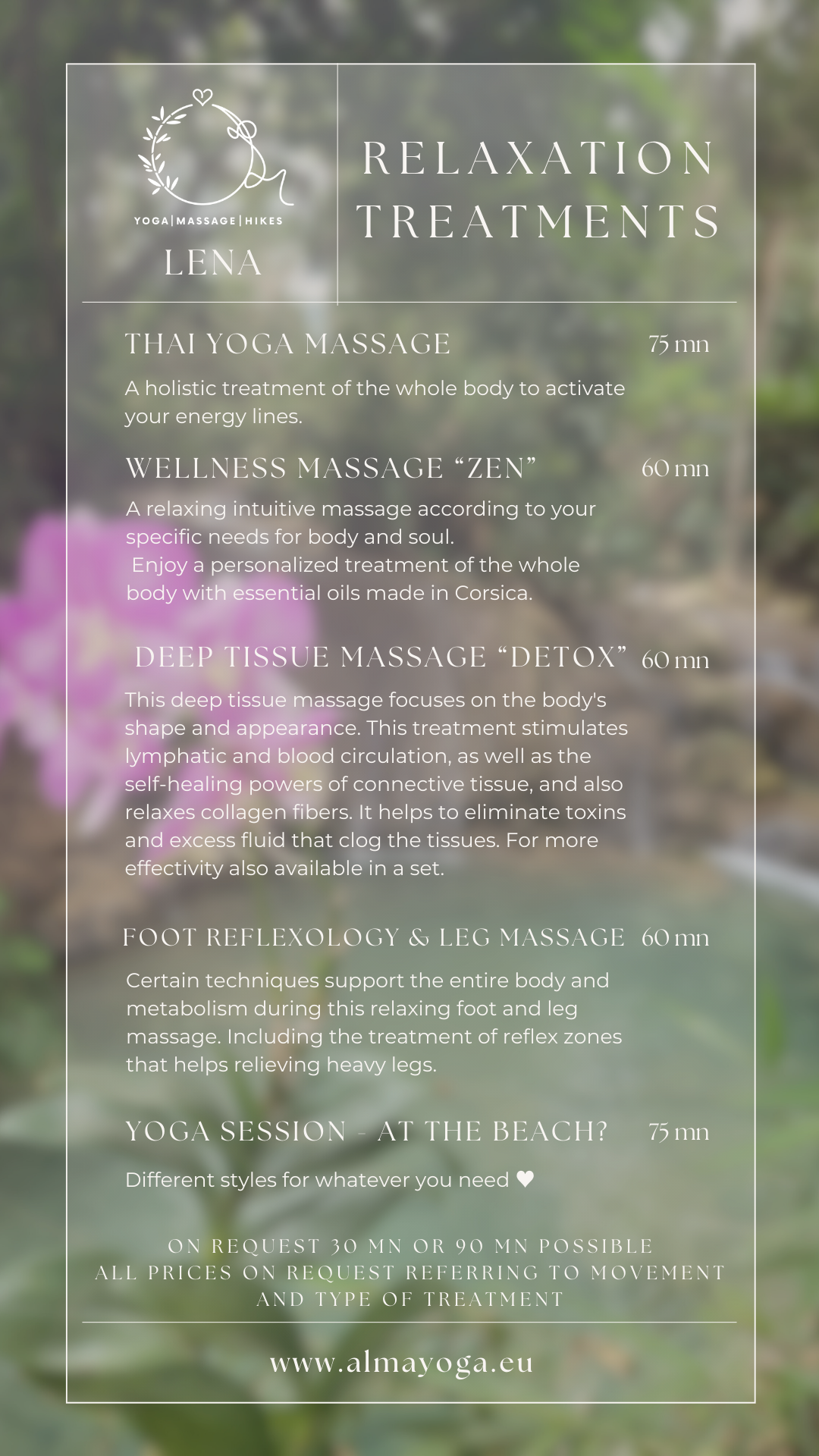Pelvic health: why the pelvis is so important for body and mind
The pelvis is a central element of our body – both physically and mentally. It ensures the stability of the body, supports the weight of the upper body and plays a key role in mobility. But the pelvis has much more to offer: It is closely linked to our psyche and our emotional well-being. In this article, you will learn why pelvic health is crucial for a stable lifestyle, what spiritual significance it has and how you can strengthen the pelvis through simple exercises and treatments such as Thai massage.
What does the pelvis have to do with a healthy psyche?
The pelvis is the place where important energy flows of the body converge. It is known as the “power center” that maintains both physical and emotional balance. An unstable pelvis can lead not only to physical complaints such as back pain or problems with the musculoskeletal system, but also to psychological stress. In many cultures, the pelvic area is associated with the energy of security and stability. People who suffer from stress-related tension in the pelvic area can also experience emotional blockages. An unstable pelvis can create a feeling of insecurity or ‘not being grounded’. On a deeper level, it can be related to unresolved emotional conflicts or a lack of inner security.
Spiritual significance of a diseased pelvis
In many spiritual traditions, such as Chinese medicine and yoga, the pelvis is regarded as the “seat of the soul”. An imbalance or blockage in the pelvic area can be interpreted as an indication of emotional tension or unresolved conflicts. In chakra theory, the pelvis is often associated with the first chakra (root chakra), which has to do with issues such as security, trust and the connection to the earth.
A diseased pelvic area could spiritually indicate that someone is struggling to feel safe and grounded, or that they are afraid of change and uncertainty. Seeking physical healing of the pelvis can also lead to spiritual renewal by helping to release blocked energy and restore balance in life.
Which activities have a negative effect on the core?
An active lifestyle is fundamentally important for your health, but there are activities that can put a negative strain on the core and pelvis in particular. These include
- **Sedentary activities**: Sitting at a desk or in front of a screen for long periods of time often leads to shortening of the hip flexor muscles and weakening of the gluteal and abdominal muscles. This can have a negative effect on posture and the pelvis.
- **Insufficient movement**: Lack of exercise leads to poor circulation in the pelvic area and can promote tension and pain.
- **Incorrect posture during sport**: Sports such as running or weightlifting, if performed with incorrect technique, can put strain on the pelvis and lead to problems such as hip or back pain.
- **Stress and emotional strain**: Persistent stress can lead to tension in the muscles in the pelvic area, which in turn leads to pain and restricted mobility.
How can I strengthen my pelvis?
A strong pelvis is crucial for overall posture and stability. Here are some ways in which you can specifically strengthen your pelvis:
- **Pelvic floor training**: The pelvic floor is an important muscle layer that supports the pelvis. Exercises such as Kegel exercises or the targeted tensing and relaxing of the pelvic floor improve stability and prevent incontinence.
- **Core training**: A strong core (torso) is the basis for pelvic stability. Exercises such as planks, side planks or bridges promote the abdominal and back muscles that support the pelvis.
- **Hip-opening exercises**: Yoga or Pilates with a focus on hip openers such as the “butterfly” or the “float” can mobilize the pelvis and release tension.
- **Stretching exercises**: Stretching the hip muscles, as found in yoga and stretching programs, promotes pelvic flexibility and prevents stiffness.
- **Strengthening the gluteal muscles**: The gluteal muscles play a central role in stabilizing the pelvis. Exercises such as squats, lunges and hip bridges strengthen these important muscles.
How does Thai massage help with pelvic health?
Thai massage is one of the most effective methods for relieving tension in the pelvic area. It combines gentle stretches, targeted pressure points and acupressure to relax the muscles and improve flexibility. By applying it to the lower back, hips and pelvis, Thai massage can release blockages in the body’s energetic flow and stimulate blood circulation.
The massage techniques help the muscles to reach the deeper layers of tissue and help to relieve pain and tension. A regular Thai massage can help to stabilize the pelvis, improve posture and increase general well-being.
Why does the pelvis provide stability throughout life?
The pelvis is the foundation of our body – it is the pivotal point from which the entire posture and body movement unfolds. A healthy, strong pelvis contributes to the stability of the entire body and ensures that we can stand upright and securely. This physical stability has a direct impact on our emotional balance. Those who are physically stable also feel mentally and emotionally stronger. A stable pelvis therefore not only promotes physical health, but also a feeling of security and self-confidence in life.
In metaphorical terms, the pelvis symbolizes stability and inner balance. A healthy pelvis makes it possible to face challenges in life, to stand with both feet firmly on the ground and not to be thrown off balance. This is reflected in both physical and mental stability.
Conclusion
Pelvic health is much more than just a physical issue. It has a profound impact on our overall wellbeing, from physical stability to emotional balance. Through regular training, targeted stretching exercises and the healing effects of Thai massage, you can strengthen your pelvis and thereby improve both your physical health and your quality of life in the long term. A healthy pelvis is a strong foundation for a healthy life – on all levels.








